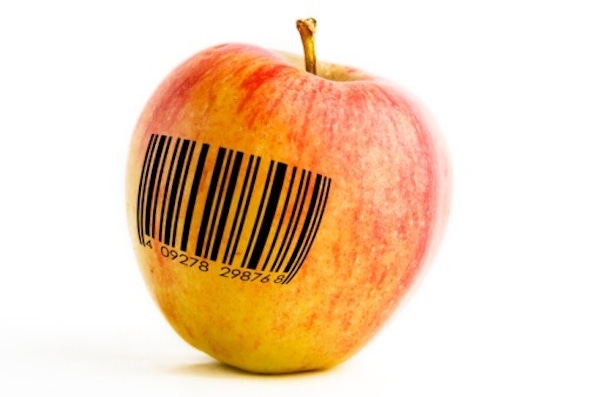Unfortunately, problems still persist with regard to manufacturers’ understanding of what it really means when an ingredient claims to be free of GMOs. How can we change the conversation?
October 4, 2013

Sponsored Content
As of 2009, “Non-GMO” has become the fastest-growing health and wellness claim in the United States, according to Nielsen Co. As a consequence, many consumers are now aware that GMOs are now present in about 75 to 80 percent of conventional processed food and some have started looking for GMO-free products as a safer alternative to products with GM ingredients.
That’s where the good news ends for the Non-GMO movement.
Unfortunately, problems still persist with regard to manufacturers’ understanding of what it really means when an ingredient claims to be free of GMOs, an issue that is further complicated by the fact that “GMO-free” and similar claims cannot be supported by scientific evidence due to the limitations in testing methods, leaving them open to interpretation and, consequently, abuse.

Click here to download our digital guide, GMOs: What you need to know.
For example, many manufacturers use ingredients from a high-risk GM source (e.g. corn, canola, soy, sugar beets), but may make GMO-free claims, regardless, either based on a supplier statement that it is non-GMO or based on fact that the ingredient tested negative on a GMO-test. However, what manufacturers may not realize is that results of GMO testing on processed ingredients (e.g. Mixed Tocopherols) and foods (e.g. Corn Flakes) are highly unreliable and a negative result cannot be taken as conclusive evidence of an ingredient’s or product’s GMO-free status. The net result is that most companies “incorrectly” or “falsely” claim their products as being 100% free of GMOs, which, given the high risk of cross-contamination among crops and seeds within the United States and elsewhere, is both unethical and legally indefensible.
Challenges for manufacturers
Manufacturers face additional hurdles in their efforts to not just manufacture products that are free of GMOs, but also to get their products verified free of GMOs by third-party organizations like the Non-GMO Project™. For example, when it comes to nutritional supplements, vegetarian capsules are currently eligible for verification by the Non-GMO Project™, but any product made with a softgel capsule is not since the Non-GMO Project™, which used to verify softgels in the past, no longer offers that option to manufacturers of softgel products.
Certifying some softgel products as “Non-GMO Project™ Verified” and excluding other products, without adequate justification or clarification, only serves to frustrate manufacturers who work tirelessly with their partners along the supply chain to help identify and remove GMOs from their finished products.
In response to these challenges, companies built on integrity, quality, transparency, and accountability have teamed up with the Non-GMO Project™ to define a rigorous standard that is not simply a “GMO-free” claim, but a trustworthy and defensible statement acknowledging the reality of contamination risk, so consumers can be assured that the product in question contains less than 0.9 percent GMOs, a standard that is consistent with EU regulations on GMOs in foods and supplements.
What does this mean for consumers?
From a consumer perspective, the silver lining in all of this is that they can rest assured that a product carrying the “Non-GMO Project Verified” seal has undergone rigorous testing and supply-chain verification. Any ingredient deemed to be “high-risk” or “at-risk” is tested prior to use in that product. It is worth noting that this testing is performed at the most efficient point in the production chain, typically during initial processing. From that point on, the Non-GMO Project™ maintains traceability and segregation to ensure that tested ingredients remain pure and uncontaminated by GMO sources. The Non-GMO Project™ performs testing at numerous points along the production chain, but does not test finished products because, as discussed earlier, finished product testing is not a reliable measure of GMO presence. Last, but not the least, the Non-GMO Project™ requires annual audits as well as onsite inspections for high-risk products in order for non-GMO verification status to be maintained.
Therefore, when shopping for non-GMO products, consumers should look for products that are verified non-GMO by third-party organizations that specialize in Non-GMO verification instead of relying on unsubstantiated claims by ignorant or unscrupulous manufacturers.
In conclusion, while the Non-GMO movement has made significant progress in the last few years in terms of educating manufacturers about the existence of GMOs, it has failed to establish clear, reasonable, and enforceable guidelines and standards
that can not only help manufacturers reliably source non-GM ingredients, but also assist with Non-GMO verification of their finished products. Similarly, considerable work still remains to be done to educate consumers on what a “GMO-free” claim on a product really means and how to avoid the pitfalls created by the ambiguity surrounding “GMO-free” claims. Proponents of the Non-GMO cause would do well to remember that lack of clarity creates a void that chaos and frustration are only too happy to fill and that will have the consequence of undermining all the progress that has been made since 2009 to advance the cause of the non-GMO movement.
You May Also Like


